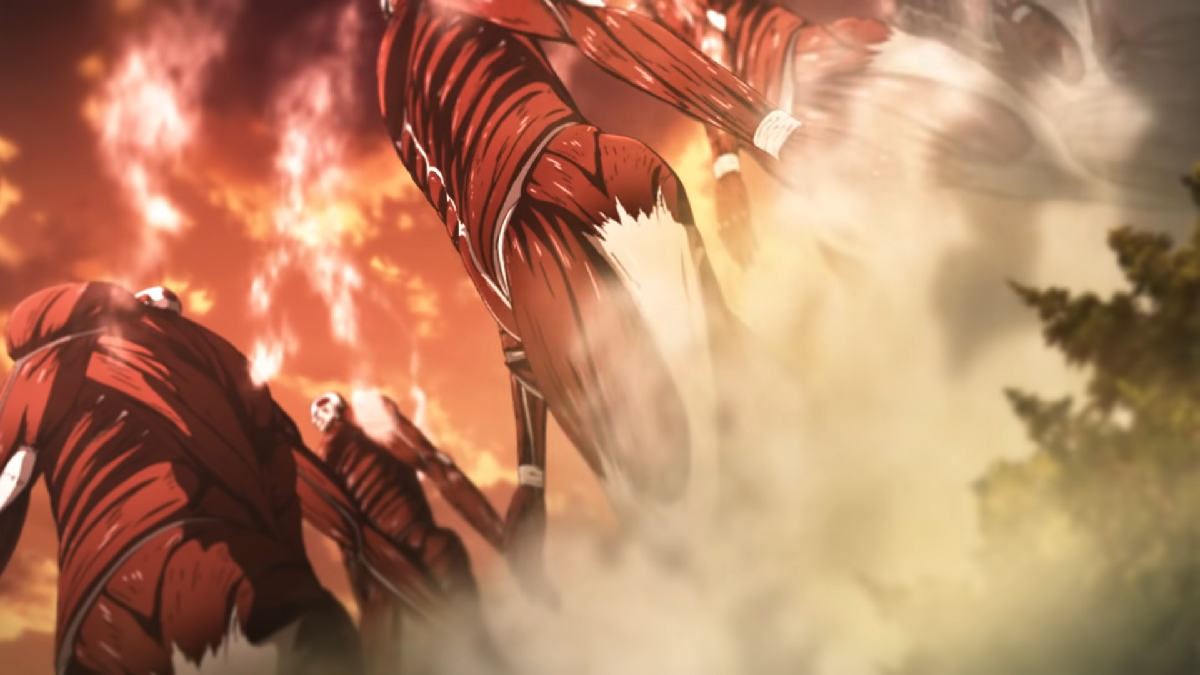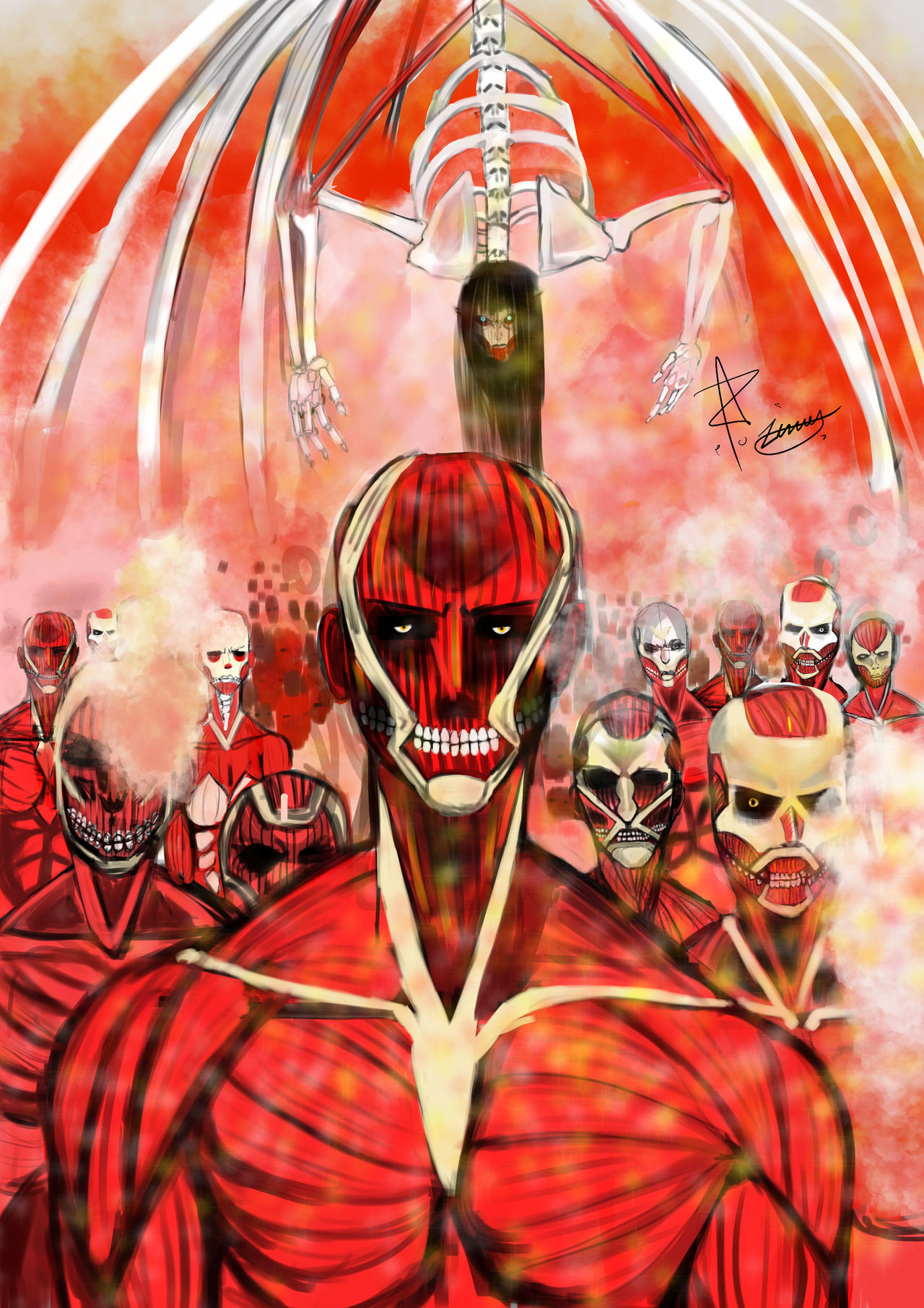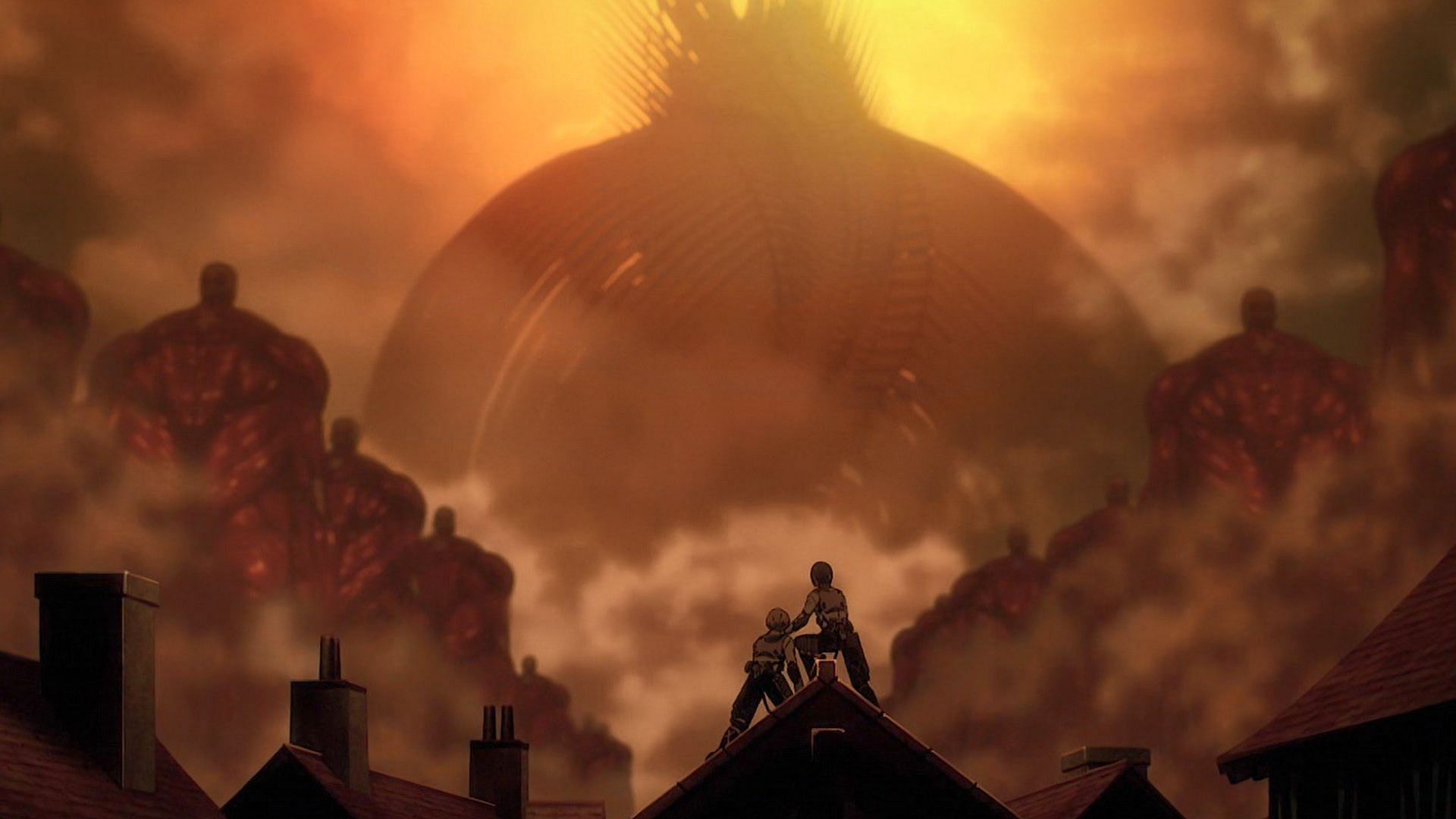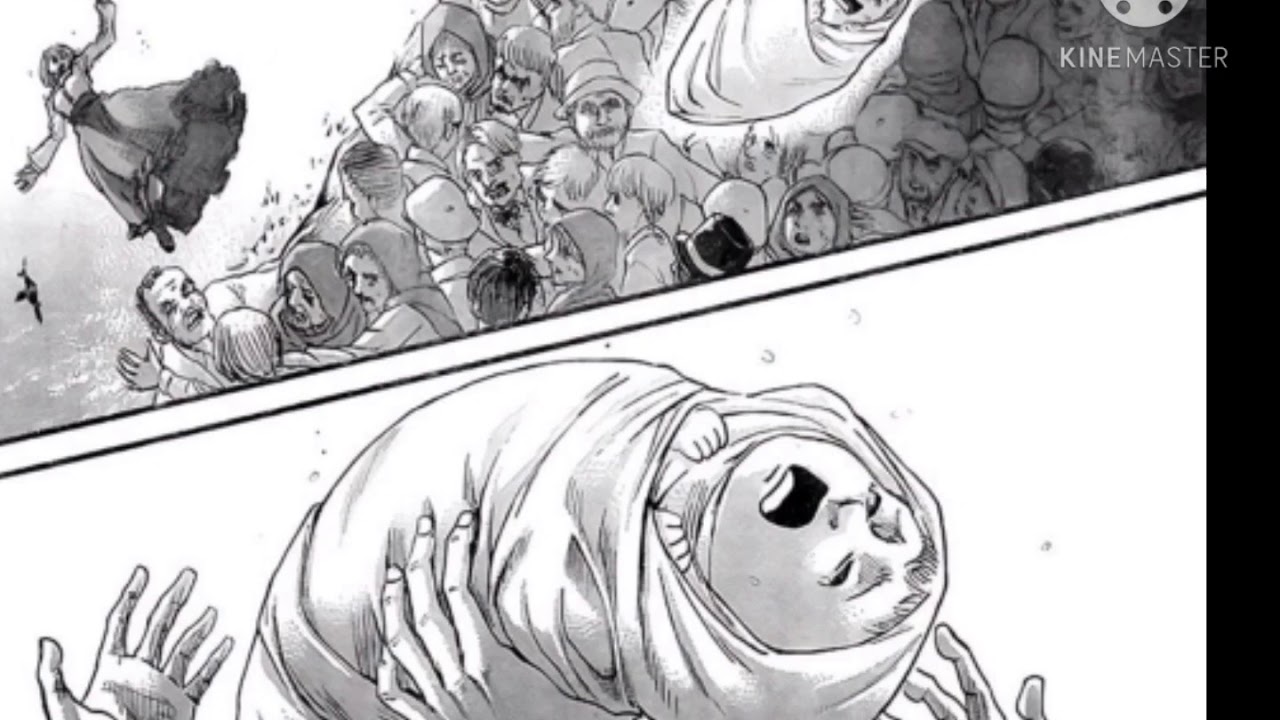The Rumbling in "Attack on Titan" is one of the series' most iconic and devastating events. While it serves as a thrilling plot device, it also carries deep symbolism that reflects themes like freedom, destruction, and the cyclical nature of history. In this blog post, we’ll delve into what the Rumbling symbolizes within the story and how it resonates with broader human experiences and philosophies, offering more insight into the narrative's complexity.
Understanding the Rumbling

The Rumbling is a colossal event where the Wall Titans awaken and march across the land, representing an unstoppable force of nature. But what exactly is it, and how does it function within the world of "Attack on Titan"?
Here's a breakdown:
- Origin: The Rumbling originates from the Founding Titan's power, which allows for the control of the Titans within the Walls. This ability has profound implications for the world, especially for the inhabitants of Marley and other nations.
- Purpose: Initially, the Rumbling serves as a last-ditch effort by Eren Yeager to protect the island of Paradis from external threats. However, it quickly escalates into a horrifying weapon aimed at exterminating most of humanity.
- Nature of Titans: The Wall Titans, who emerge during the Rumbling, represent the corrupted history of the Eldians—being manipulated and controlled, much like the soldiers of the Titan army.
What's striking about the Rumbling is its dual nature. On one hand, it’s a desperate act for survival; on the other, it symbolizes the cycle of violence and the lengths individuals will go to in the name of freedom. The destruction left in its wake raises questions about the cost of achieving peace and what true freedom entails.
It’s not just a physical event, but a metaphorical journey into the depths of humanity's darker impulses.
The Historical Context of the Rumbling

The Rumbling in "Attack on Titan" isn't just a plot device; it's steeped in rich historical context that resonates throughout the series. To truly understand its significance, one must examine the events and ideologies that led to this cataclysmic event.
Historically, the Rumbling is rooted in the long-standing conflict between the Eldians and Marleyans. This antagonism isn't merely a backdrop but serves as a catalyst for the Rumbling's commencement. Eldians, who are often portrayed as the oppressed, have lived in fear of their own powers, particularly the ability of the Titans that stem from their lineage. Over time, this has created a profound sense of inevitability surrounding the Rumbling as a form of reclamation.
Moreover, the series draws parallels to real-world history, where oppressed groups have resorted to radical actions when pushed to the brink. The Rumbling symbolizes not just a physical destruction of the world, but the collapse of social structures and ideologies that have marginalized the Eldian people.
Another significant historical element is the legacy of the Founding Titan. The decisions made generations ago continue to haunt both Eldians and Marleyans, raising questions about morality, revenge, and survival. This long-lasting struggle reflects the cyclical nature of violence and oppression.
Key Historical Points:
- Conflict between Eldians and Marleyans.
- The legacy of the Founding Titan.
- Parallel to real-world oppression and violent resistance.
- The inevitability of revenge and reclamation in marginalization.
Character Perspectives on the Rumbling

Take Eren Yeager, for instance. His perspective is deeply shaped by trauma and loss, especially after witnessing the horrors of war. For him, the Rumbling becomes a necessary evil, a way to ensure the safety of his people by "cleansing" the world of those who threaten them. This viewpoint leads him to a dark moral line, leaving fans grappling with the questions of sacrifice and the greater good.
On the flip side, characters like Armin Arlert and Mikasa Ackerman view the Rumbling with horror and despair. For them, it's a betrayal of their ideals and friendships, making them question if violence can truly resolve their conflicts. Their internal struggles add emotional depth to the narrative, as they cling to hope amidst chaos and devastation.
Contrasting Perspectives:
| Character | Perspective |
|---|---|
| Eren Yeager | Justifies the Rumbling as necessary for Eldian survival. |
| Armin Arlert | Views the Rumbling as a moral downfall and betrayal. |
| Mikasa Ackerman | Struggles with loyalty to Eren while opposing his choices. |
As we explore these various perspectives, it becomes clear that the Rumbling isn't just a physical event; it's a symbol of the psychological turmoil that the characters endure, making it a focal point of "Attack on Titan’s" narrative depth.
Thematic Implications of the Rumbling

The Rumbling, a catastrophic event in the world of Attack on Titan, is deeply embedded with themes that resonate on both a personal and a societal level. At its core, the Rumbling symbolizes the lengths to which humanity will go to safeguard their existence. However, it also raises significant moral questions about sacrifice, freedom, and vengeance.
One major theme is the *struggle for freedom. The Rumbling is initiated as a desperate measure to protect the Eldians from outside threats. Yet, this act of freedom comes at a profound cost—the annihilation of countless lives. It compels viewers to ponder: is true freedom achieved through destruction? The moral dilemma surrounding this question highlights the ongoing battle between survival and morality.
Another important thematic implication is the cycle of violence. The Rumbling serves as a grim reminder of how history tends to repeat itself. The series reflects how past grievances drive future actions, often leading to more suffering. This theme of cyclical conflict manifests not just on a societal level, but also within the characters, especially in the protagonist Eren Yeager, who grapples with his own motivations and the consequences of his choices.
Lastly, the Rumbling speaks to the theme of collective identity and trauma. The Eldians' shared history of suffering binds them, yet it also urges the viewer to question what it means to belong. Are they justified in committing atrocities to protect their own? The Rumbling, thus, becomes a poignant exploration of identity at the intersection of survival and moral ambiguity.
The Rumbling as a Catalyst for Change
The Rumbling, while a destructive force, also acts as a powerful catalyst for change within the world of Attack on Titan. It serves as a turning point, forcing characters—and even societies—to confront the very foundations upon which they stand. The aftermath of this colossal event ushers in profound transformations that reshape perspectives and prompt critical reflections on existence and ethics.
Firstly, the Rumbling encourages character evolution. Key figures are pushed to their limits, sparking internal conflicts that reveal their true selves. For instance, Eren Yeager's transformation from a hopeful protagonist to a perceived antagonist becomes a lens through which the audience examines the complexities of human nature. The turmoil incites characters to reevaluate their beliefs about power, freedom, and sacrifice.
| Character | Transformation |
|---|---|
| Eren Yeager | From hero to anti-hero, triggering moral debates |
| Armin Arlert | Questions the consequences of Eren’s actions; seeks peace |
Moreover, the Rumbling serves as a societal mirror, reflecting the real-world complexities of conflict resolution and societal change. The devastation faced by both Eldians and Marleyans teaches them that survival often demands collaboration rather than isolation. This harsh lesson unveils a new narrative where peace must be actively pursued despite historical enmities, enhancing the overarching question of whether humanity can escape its fate of destruction.
In conclusion, while the Rumbling signifies darkness and despair, it inadvertently sparks a revolution of thought and understanding among characters and viewers alike, pressing the notion that even in the direst of circumstances, there lies the potential for growth and change. The events that follow serve as powerful reminders of the choices we make, and how they shape not only our futures but also the futures of those around us.
The Symbolism of the Rumbling in Attack on Titan
The Rumbling in the anime and manga series "Attack on Titan" represents a complex interplay of themes such as freedom, destruction, and the cyclical nature of violence. Driven by the power of the Founding Titan, the Rumbling involves colossal titans awakening from their slumber to trample the world, which serves as a profound metaphor for the devastating impacts of war and the consequences of seeking liberation through destruction.
At its core, the Rumbling symbolizes the destructive cost of freedom. Characters like Eren Yeager, who initially embodies the ideals of pursuit of liberty, ultimately face the moral implications of their actions when unleashing chaos upon humanity. This action raises questions about whether true freedom can be achieved through acts of violence.
Additionally, the Rumbling reflects the cyclical nature of violence* in human history. Just as nations have repeatedly encountered destruction in the name of freedom, the titans' march serves as a physical representation of how history often repeats itself. This cycle creates a poignant commentary on the futility of conflict and the persistent human propensity for war.
| Concept | Symbolism |
|---|---|
| Destruction | Consequences of violent quests for freedom |
| Cycles of Violence | Repetitive nature of historical conflicts |
| Human Nature | Innate tendencies towards self-destruction |
In conclusion, the Rumbling not only serves as a pivotal plot device but also carries a deeper significance as it encapsulates the intricate themes of freedom, destruction, and the grim reality of human history within "Attack on Titan." Understanding this symbolism encourages viewers and readers to reflect on the complexities of their own struggles for autonomy and the implications of their choices.










